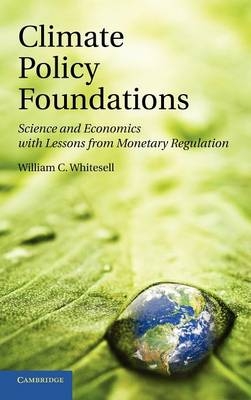
Climate Policy Foundations
Cambridge University Press (Verlag)
978-1-107-00228-9 (ISBN)
This book provides a thorough grounding in the science and economics of climate policy issues and draws key lessons from the longer experiences of central banks in grappling with related challenges. Findings and controversies of climate history and the effects of human activities on climate are reviewed. The author describes similarities in risk management approaches for climate and monetary policy. Overall goals and frameworks for addressing climate change risks are assessed. Command-and-control and market-based options are compared (including performance standards, taxes and cap-and-trade). Market-based approaches sometimes require a choice between prices and quantities as policy instruments. However, the author discusses how techniques of central bank interest rate management can be adapted in a hybrid climate policy approach to achieve environmental goals while making carbon prices predictable and also ensuring well-functioning carbon markets. Key lessons are offered for improving existing and future national and international climate policy architectures.
William C. Whitesell is Director of Policy Research in Washington, DC. From 1987 to 2006 he served on the staff of the U.S. Federal Reserve Board, where he held management responsibilities for staff work on the formulation and implementation of monetary policy, including market analysis and the monetary regulation of banks. He conducted independent climate economics research from 2006 to 2007. Dr Whitesell has also held positions as a financial analyst at the World Bank and as a development finance specialist at the Banque Arabe et Internationale d'Investissement, in addition to proprietary consulting. Earlier he taught economics at New York University and Virginia Tech. He holds an MBA from the Wharton School at the University of Pennsylvania and a Ph.D. in economics from New York University.
Introduction; Part I. Earth's Climate History and Outlook: 1. Salient events of climate history; 2. Human and climate interactions; 3. Greenhouse gases; 4. Emitting economic sectors; 5. Forecasts of GHG emissions and global temperatures; 6. Potential impacts of climate change; Part II. Climate Policy Choices: 7. Climate policy goals; 8. Policy mandates and market-based approaches; 9. The design of cap-and-trade programs; 10. Prices, quantities and lessons from monetary policy; 11. The outlook for climate policies; Appendix: discount rates in climate analysis.
| Verlagsort | Cambridge |
|---|---|
| Sprache | englisch |
| Maße | 152 x 229 mm |
| Gewicht | 540 g |
| Themenwelt | Naturwissenschaften ► Biologie ► Ökologie / Naturschutz |
| Naturwissenschaften ► Geowissenschaften ► Meteorologie / Klimatologie | |
| Technik ► Umwelttechnik / Biotechnologie | |
| Wirtschaft ► Volkswirtschaftslehre ► Wirtschaftspolitik | |
| ISBN-10 | 1-107-00228-1 / 1107002281 |
| ISBN-13 | 978-1-107-00228-9 / 9781107002289 |
| Zustand | Neuware |
| Haben Sie eine Frage zum Produkt? |
aus dem Bereich


